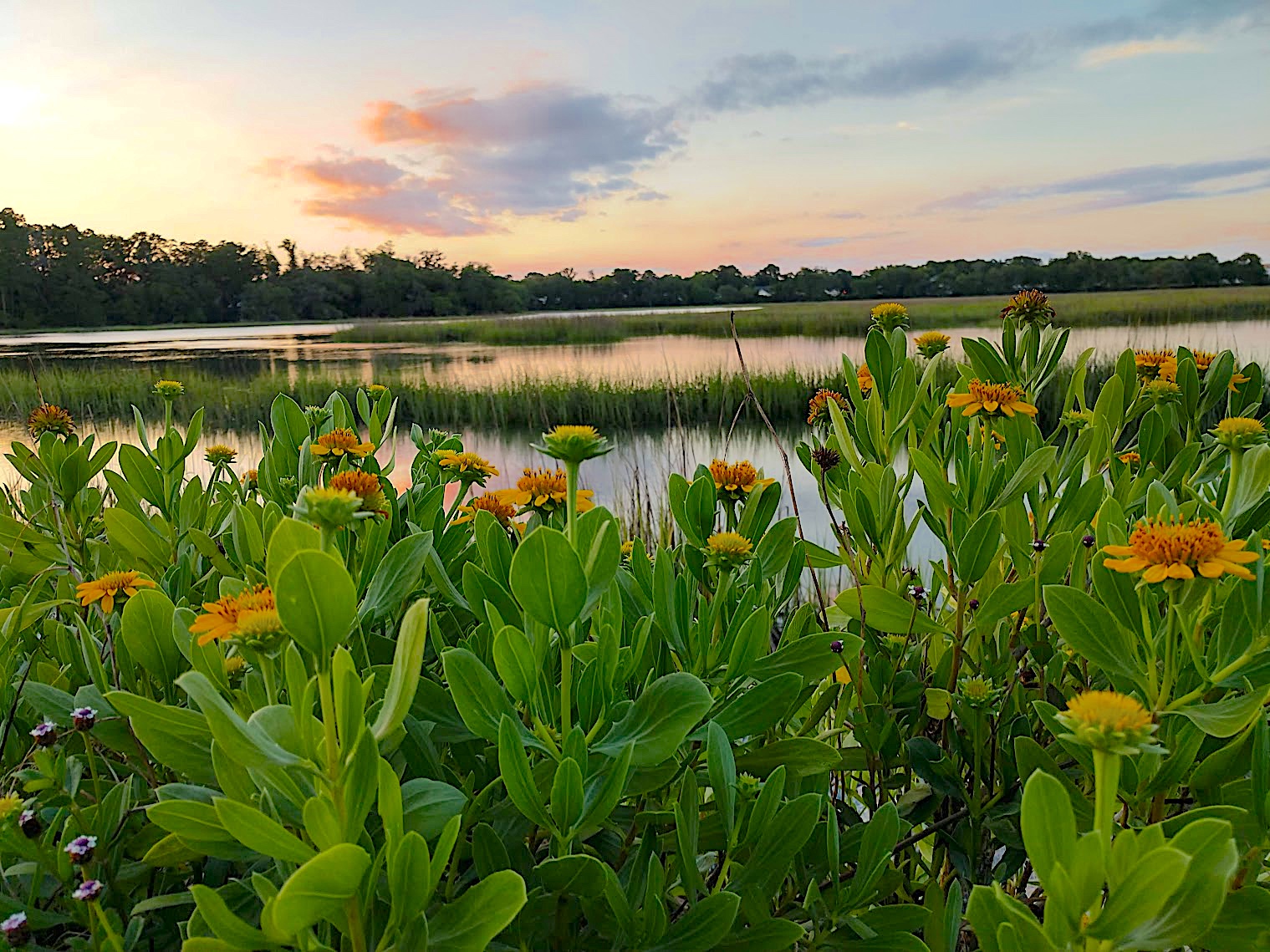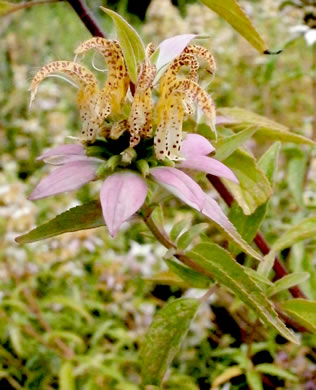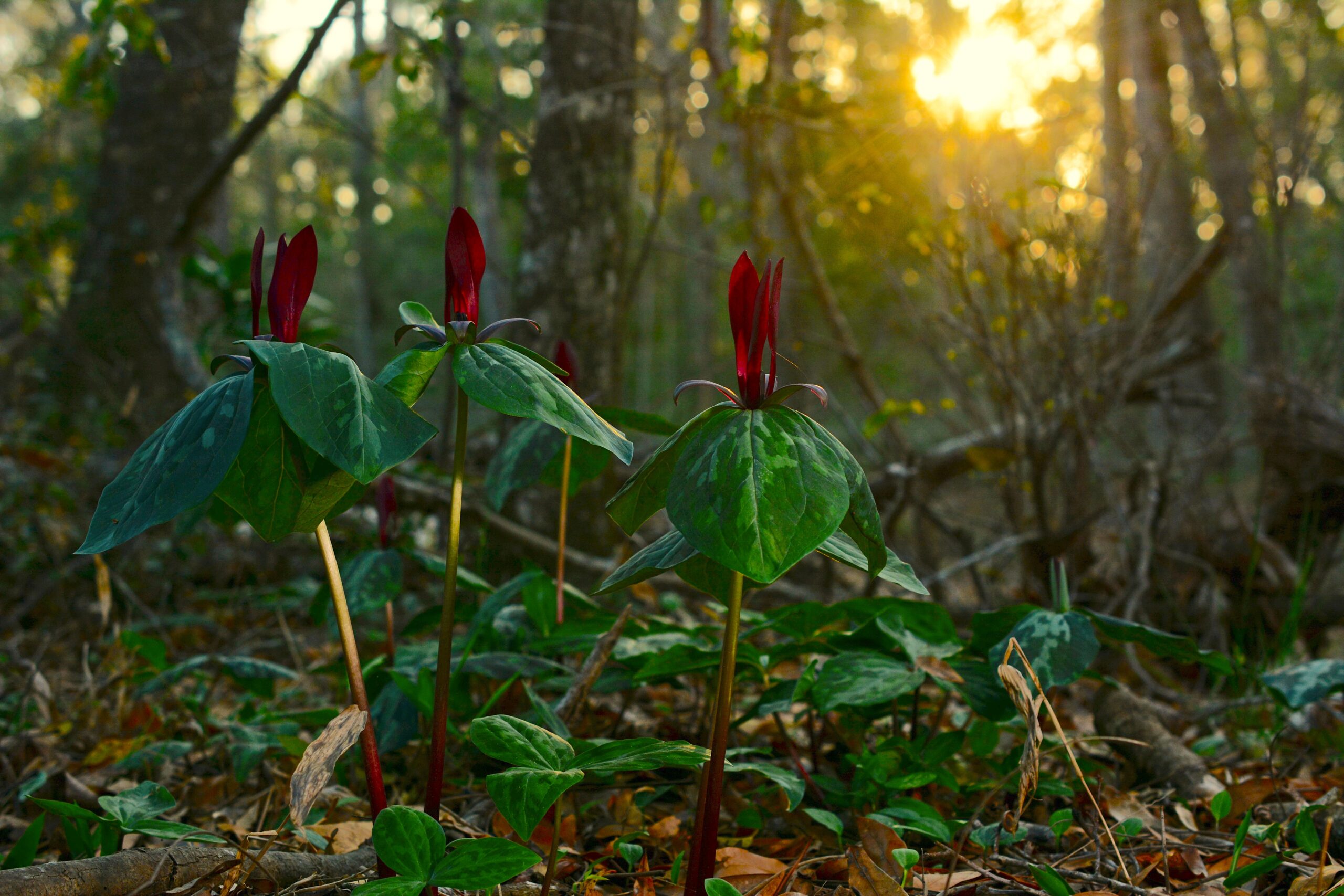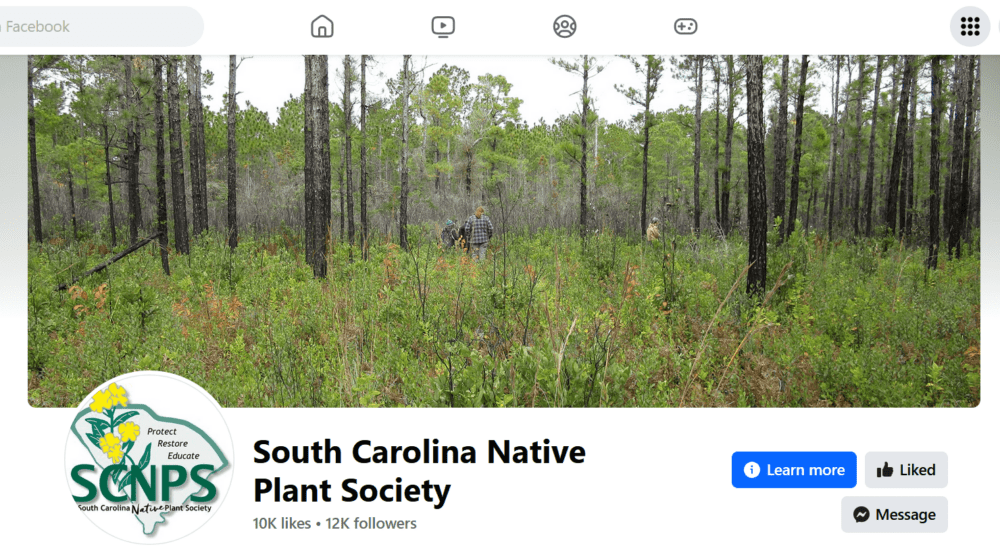About the South Coast Chapter
Promoting Native Plants in Beaufort County
The South Coast Chapter of SCNPS was established in 2008 and is based in Beaufort County, including Beaufort, Port Royal, and Hilton Head.
Meetings
Meetings are usually held at the Clemson Extension Service Office (18 John Galt Rd, Beaufort, SC) on the fourth Monday of each month, at 6:00 pm. Sign up for our email newsletter to find out more about upcoming meetings and events.
Field Trips & Projects
Meet like-minded people to learn and enjoy the outdoors. Our field trips are led by expert members and guest leaders on hikes, boat tours, seed collections, plant rescues, invasive eradication, and plant surveys.
Our field trips are typically free, open to the public, may be full or half-days, for the experienced and novice, and can be easy to moderately strenuous.
Watch our Calendar for upcoming Field Trips.
Publicity & Social Media
Our email newsletter features stories about native plants and biodiversity as well as news and upcoming events and volunteer opportunities.
Members are automatically subscribed. Non-members are welcome to subscribe.
You can also follow us on Facebook, Instagram and YouTube by clicking on those links at the bottom of this page!
Members get the opportunity to be the first to sign up for field trips, and early access to plant sales. As a member, you will be an integral part of an organization that plays a critical role in protecting and preserving our state’s natural habitats. SCNPS is an advocate with a strong record across the state for the preservation and restoration of sustainable landscapes that support the life of not just essential flora and fauna, but of all of us. We are in the field, in courtrooms, and everywhere in between, and the stronger our membership, the louder our voice.
Join Us



